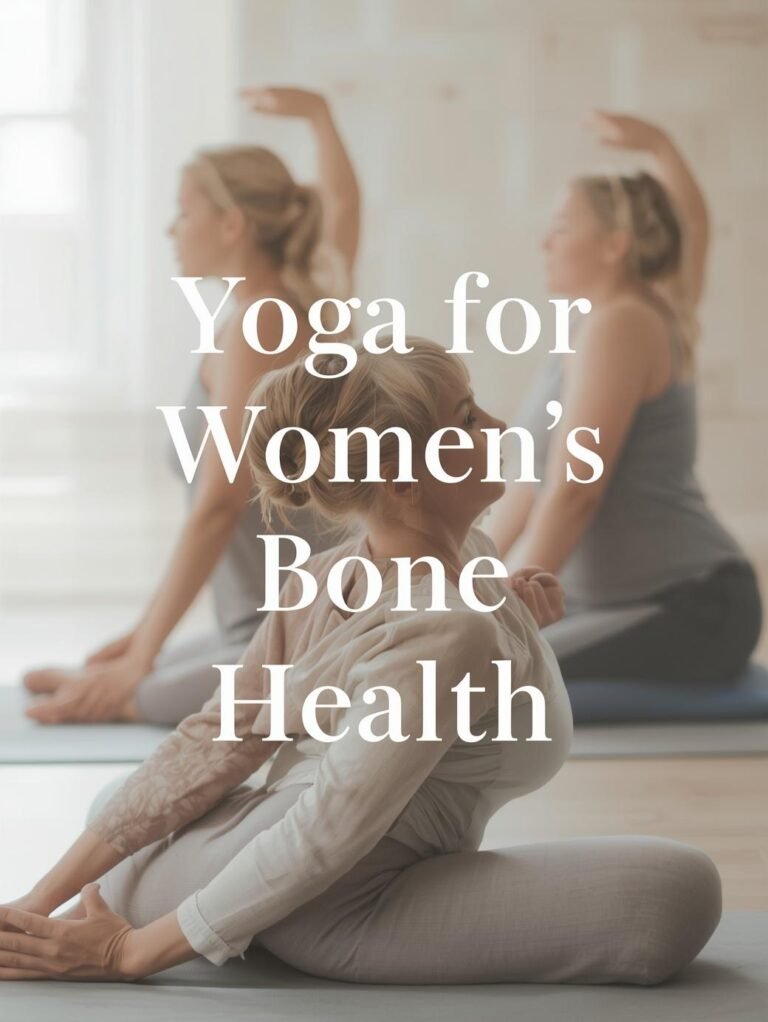Yoga for Womens Health: Managing PCOS, Endometriosis & More
Millions of women worldwide live with chronic conditions like PCOS (Polycystic Ovary Syndrome) and endometriosis conditions that bring fatigue, pain, hormonal imbalance, and emotional distress. While medical treatment is essential, yoga offers a powerful complementary approach to managing symptoms, reducing stress, and restoring balance. Rooted in mindful movement and breath, yoga helps regulate the nervous system, improve circulation to reproductive organs, and support emotional resilience. In this guide, well explore targeted poses, breathing techniques, and lifestyle tips to help you reclaim control over your body naturally and holistically.
Table of Contents
- How Yoga Supports Hormonal & Reproductive Health
- Best Yoga Poses for PCOS & Endometriosis
- Breathwork, Diet & Daily Habits
- Frequently Asked Questions
- Final Thoughts
How Yoga Supports Hormonal & Reproductive Health
Yoga works on multiple levels to support women with PCOS and endometriosis. Physically, it improves blood flow to the pelvic region, helping reduce inflammation and ease cramping. Mentally, it calms the stress response critical because high cortisol levels worsen hormonal imbalances. Spiritually, it fosters self-compassion, helping women cope with the emotional toll of chronic illness.
Studies show that regular yoga practice can lower testosterone levels in PCOS, reduce pain in endometriosis, and improve menstrual regularity. It also enhances insulin sensitivity a key factor in managing PCOS symptoms.
Best Yoga Poses for PCOS & Endometriosis
Focus on gentle, restorative poses that open the hips, stretch the lower back, and calm the nervous system. Avoid intense twists or deep backbends during flare-ups.
Reclining Bound Angle Pose (Supta Baddha Konasana): Lie on your back with soles of feet together, knees falling open. Place pillows under knees for support. This pose opens the pelvis and relieves tension.
Legs-Up-the-Wall (Viparita Karani): Lie on your back with legs resting vertically against a wall. This inversion reduces swelling, calms the mind, and improves circulation.
Cat-Cow Stretch (Marjaryasana-Bitilasana): Move gently between arching and rounding the spine. This warms the back and massages internal organs.
Childs Pose (Balasana): Kneel and fold forward, arms extended or resting beside you. This restful pose soothes the nervous system and relieves lower back pain.
Bridge Pose (Setu Bandhasana): Lift hips while lying on your back. This strengthens glutes and opens the front of the pelvis great for improving circulation.
Breathwork, Diet & Daily Habits
Pair your yoga practice with supportive lifestyle habits:
Pranayama (Breathwork): Practice Nadi Shodhana (alternate nostril breathing) to balance hormones and calm anxiety. Do 510 minutes daily.
Diet Tips: Reduce sugar and processed foods. Increase fiber, healthy fats (avocado, nuts), and anti-inflammatory spices like turmeric and ginger.
Daily Rituals: Keep a symptom journal. Track your cycle, energy, and mood alongside your yoga practice. Notice patterns and adjust accordingly.
Real-life tip: Create a cozy yoga corner at home with soft lighting, a blanket, and calming music. Make it your sanctuary for healing even 10 minutes a day counts.
Frequently Asked Questions
Q: Can yoga cure PCOS or endometriosis?
A: No but it can significantly reduce symptoms and improve quality of life when combined with medical care and lifestyle changes.
Q: What if Im in pain? Should I still practice?
A: Modify or rest. Gentle breathing or guided meditation may be more helpful than physical poses during flare-ups.
Q: How soon will I see results?
A: Many women notice improved sleep and reduced anxiety within 24 weeks. Hormonal changes may take 23 months of consistent practice.
Final Thoughts
Living with PCOS or endometriosis doesnt mean surrendering to discomfort. Yoga offers a gentle, empowering path to reclaim your body, calm your mind, and restore balance. Start small, listen deeply, and honor your rhythm. Your mat is a safe space no expectations, no pressure, just presence. With patience and practice, youll discover strength you never knew you had.













